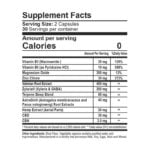
Understanding Anxiety and Anxiety Disorders
In this comprehensive guide, we will delve into the intricacies of anxiety and anxiety disorders, shedding light on their nature, causes, symptoms, and available treatments. From everyday worries to debilitating conditions, we will explore the spectrum of anxiety and provide insights into managing and overcoming these challenges.
This post is intended as information and for general knowledge only. It is not a substitute for medical advice, diagnosis, or treatment. It is recommended that you talk to a healthcare professional about this before introducing cannabinoids into your daily routine (especially if you have been diagnosed with any medical conditions or are under any medication). It is not recommended to drive or operate any machinery when using cannabis- or hemp-derived products. Use responsibly!
What is Anxiety?
Anxiety is a fundamental aspect of human experience, characterized by feelings of unease, worry, and fear in response to perceived threats. While normal anxiety is a protective mechanism, alerting us to potential dangers and enabling us to respond appropriately, anxiety disorders involve excessive and often irrational levels of anxiety that interfere with daily functioning.
The role of anxiety in human evolution is significant. The fight-or-flight response, developed over millennia, is a physiological reaction that prepares humans to face threats. In early humans, anxiety played an adaptive role, helping them survive by heightening awareness and triggering rapid responses to danger.
Types of Anxiety Disorders
Generalized Anxiety Disorder (GAD)

GAD is marked by persistent and excessive worry about various aspects of life, even when there’s no immediate threat. Individuals with GAD experience chronic anxiety that can affect relationships, work, and social interactions. Their worries may range from health concerns to everyday responsibilities, and they often struggle with physical symptoms like muscle tension and insomnia.
Panic Disorder
Panic disorder involves recurrent panic attacks, sudden surges of intense fear and discomfort. These attacks can manifest with physical symptoms like heart palpitations, dizziness, and a sense of unreality (derealization). Agoraphobia, often linked to panic disorder, is the fear of situations where escape might be difficult, such as crowded spaces, due to concerns about experiencing a panic attack.
Social Anxiety Disorder (SAD)
SAD, also known as social phobia, centers on an intense fear of being judged or humiliated in social situations. This anxiety disorder can hinder personal and professional life, making activities like public speaking, networking, or dating daunting experiences. Cognitive distortions, like mind-reading and catastrophic thinking, amplify the distress in social situations.
Specific Phobias
Specific phobias are characterized by excessive and irrational fears of specific objects or situations, such as heights, animals, or medical procedures. These fears often develop through early experiences and classical conditioning. Desensitization, exposure therapy, and systematic desensitization are psychological treatments aimed at reducing the fear response.
Obsessive-Compulsive Disorder (OCD)
OCD involves intrusive, distressing thoughts (obsessions) and repetitive behaviors or mental acts (compulsions) aimed at reducing anxiety. This disorder’s cycle revolves around obsessions triggering anxiety and compulsions temporarily relieving it. Treatment options include medications that affect serotonin levels and cognitive behavioral therapy (CBT), particularly Exposure and Response Prevention (ERP).
Post-Traumatic Stress Disorder (PTSD)
PTSD stems from exposure to traumatic events, leading to re-experiencing, avoidance, and hyperarousal symptoms. Flashbacks, social isolation, and an exaggerated startle response are common. Trauma-focused therapies, like cognitive processing therapy and Eye Movement Desensitization and Reprocessing (EMDR), can help individuals process and cope with traumatic memories.
Causes and Risk Factors
Biological Factors

Genetics play a role in anxiety disorders, with a family history increasing vulnerability. Neurochemical imbalances involving serotonin, GABA, and norepinephrine contribute to anxiety. Brain regions like the amygdala, responsible for threat detection, are hyperactive in individuals with anxiety disorders.
Environmental Factors
Childhood experiences, including neglect, abuse, or loss, can shape an individual’s susceptibility to anxiety disorders. Traumatic events, especially during critical developmental periods, can lead to conditions like PTSD. Chronic stress and its impact on the body’s stress response system, known as allostatic load, also contribute to anxiety.
Psychological Factors
Cognitive biases, such as catastrophizing and black-and-white thinking, distort reality and exacerbate anxiety. Perfectionism and high sensitivity are personality traits that contribute to the development of anxiety disorders, particularly in the presence of stressors.
Symptoms of Anxiety Disorders
Physical Symptoms
Anxiety disorders often manifest physically, with symptoms including heart palpitations, shortness of breath, muscle tension, and restlessness. The sympathetic nervous system’s activation triggers the release of stress hormones like cortisol, leading to gastrointestinal disturbances and the “fight-or-flight” response.
Emotional Symptoms
Excessive fear, apprehension, and irritability are emotional hallmarks of anxiety disorders. These emotions can impair decision-making, mood stability, and daily life. A pervasive sense of impending doom and hypervigilance further contribute to emotional distress.
Cognitive Symptoms
Anxiety disorders impact cognitive function, leading to racing thoughts, difficulty concentrating, and catastrophic thinking. Breaking the cycle of rumination is crucial, as intrusive thoughts become a hallmark of anxiety disorders. It’s essential to differentiate between these and the obsessions seen in OCD.
Diagnosis and Assessment
Mental health professionals, including psychiatrists, psychologists, and therapists, play a key role in diagnosing anxiety disorders. The American Psychiatric Association’s DSM-5 outlines specific criteria for each disorder, aiding accurate diagnosis. Differential diagnosis helps distinguish between anxiety disorders and other mental health conditions, including depression.
Treatment Options
Psychotherapy
Cognitive Behavioral Therapy (CBT) is a primary psychotherapeutic approach for anxiety disorders. It involves identifying and restructuring negative thought patterns, while exposure therapy systematically exposes individuals to anxiety triggers, reducing avoidance behaviors and desensitizing them to fears. Mindfulness-based approaches like Acceptance and Commitment Therapy (ACT) are also effective.
Medications
Antidepressants and anti-anxiety medications, particularly SSRIs (Selective Serotonin Reuptake Inhibitors) and SNRIs (Serotonin-Norepinephrine Reuptake Inhibitors), are commonly prescribed for anxiety disorders. These medications help alleviate symptoms but should be used alongside therapy to address underlying causes.
Lifestyle Interventions
Regular exercise releases endorphins, reducing stress and anxiety. A balanceddiet and good gut health are linked to improved mental well-being. Practicing good sleep hygiene and stress-reduction techniques can significantly impact anxiety levels.
Coping Strategies
Relaxation Techniques

Deep breathing, progressive muscle relaxation, and guided imagery activate the parasympathetic nervous system, promoting relaxation. Yoga and meditation enhance the mind-body connection, fostering tranquility.
Self-Care Practices
Prioritizing self-care involves nurturing physical and mental well-being, setting boundaries, and engaging in hobbies. These practices distract from worries and increase joy.
Building Resilience
Developing a support network, enhancing emotional resilience, and acquiring coping skills are key aspects of building resilience. Flexibility and adaptability are essential in tolerating uncertainty.
Seeking Help and Support
Breaking the stigma surrounding mental health involves open conversations. Knowing when to seek professional help and encouraging loved ones to provide support fosters understanding and empathy.
Conclusion
Anxiety and anxiety disorders are complex challenges, yet with understanding, support, and the right strategies, they are manageable. By recognizing the various forms of anxiety disorders, their origins, symptoms, and available treatments, we can take proactive steps toward overcoming anxiety’s impact and nurturing mental well-being. Seeking help is a sign of strength, and a life beyond anxiety is attainable with the appropriate resources.
Also Interesting:















